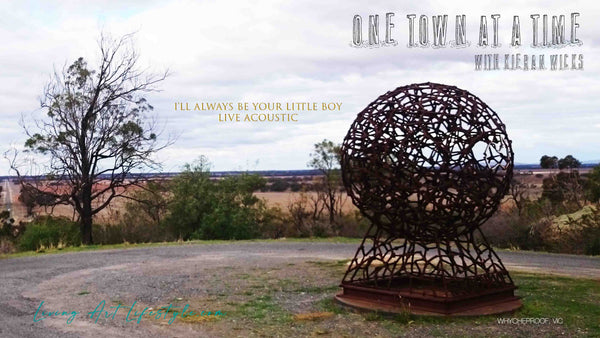

Mining on the American River near Sacramento, circa 1852
George H. Johnson, Public domain, via Wikimedia Commons
DIFFERENCES IN THE GOLD RUSHES OF CALIFORNIA AND AUSTRALIA
The 1850s marked by far the greatest period of gold production the world had ever known, with Victoria alone producing a third of the world’s gold. New South Wales contributed an additional, comparably meagre, 5 per cent.
Approximated to be of comparable size in terms of mining population and gold production, the Californian and Victorian goldfields rapidly raised the world’s annual gold output by a factor of six or seven
"There was, however, a fundamental difference: in California the gold-seeking miners saw themselves as transient, whereas in Victoria they were more liable to remain, either staying as miners, moving to other Australian fields as fluctuating yields dictated, or settling into non-mining occupations. This is vividly illustrated by comparing the present-day landscape of the two goldfields – central Victoria, with its great gold cities, administrative centres, and public and commercial infrastructure, and the Californian mountains, with a myriad of small towns, some of these still inhabited but many others now ghost towns". (Cultural Heritage Unit, n.d.)

Gullgraver 1850 California - A forty-niner peers into the slit of California’s American River.
Photo: L. C. McClure, Public domain, via Wikimedia Commons
IDENTITY CRISIS
Rather focused upon what riches the vast open pastoral lands had to offer the fledgling economy, colonial administrators initially saw the discovery of gold as a hindrance if not an existential threat to colonial administration, concealing early discoveries to avoid a likely dislocation of the relatively small community, but various factors soon changed that policy.
Namely the mass exodus of a then dwindling population bounding the fence for the green gold fields of California from the rushes commencement in 1848, coercing the New South Wales colonial government to alter its position and encourage the exploration for and exploitation of payable gold.

Handbill of the California Emigration Society, Boston, advertising passage to
California "in a first-rate Clipper Ship." Published in 1856, it promoted the
economic opportunities to be found in the new El Dorado. On the verso, notice
was made of mining companies offering wages of "$4.00 per day and board to
steady workmen," testifying to the transformation of gold mining from individual
adventure to corporate enterprise. Courtesy Huntington Library, San Marino, Calif .
(Rawls, James J., and Richard J. Orsi)

An 1849 handbill from the California Gold Rush. (Wikicommons)
Star Tracer - Eco-Friendly Athletic Hoodie
The Australian authorities, weren’t completely hapless, having learnt some valuable lessons since the beginning of the California Gold Rush in 1848, and as such were understandably hesitant of revealing discoveries to the wider public.
But by 1849 the colonial government acquiesced and sought the approval of the Colonial Office in England to allow the exploitation of the mineral resources of New South Wales, with a subsequent reward being officially offered to the first person to find payable gold.
(New South Wales Gold Rush, n.d.)
In effect A 360-degree transformation was emerging on the perception of Australia as nothing more than a penal colony, somewhere to send society’s waste, to a land of riches and opportunity.
@kieran.wicks #question from @kieran.wicks #CalifornianGoldRush #GoldRush #Victoria #Gold #49ers #Didyouknow #historian #WorldChanging #AustralianHistory #SocialChange #GoldRushStories #OneTownataTime #historyofmoney #GoldFever #GoldStandard #Economy #Inflation #LivingArtLifestyle ♬ original sound - Kieran.Wicks

(Goldmine, Bendigo - The Holterman Collection , c1870-1875)

Sacred Heart Cathedral - Anglican Church Bendigo Victoria

Discovery of Gold Commemorative Stone Statue, Bendigo Victoria

Former Bendigo Post Office Built 1883

In preparation for the end of the gold rush communities across Victoria built large, beautiful, neoclassical stone buildings, bringing about a sense of permanence for the settlements around which communities grew and flourished.
(The Gold Rushes of Victoria and California Compared, n.d.)
Star Tracer - Eco-Friendly Athletic Hoodie

BENDIGO TOWN HALL











































